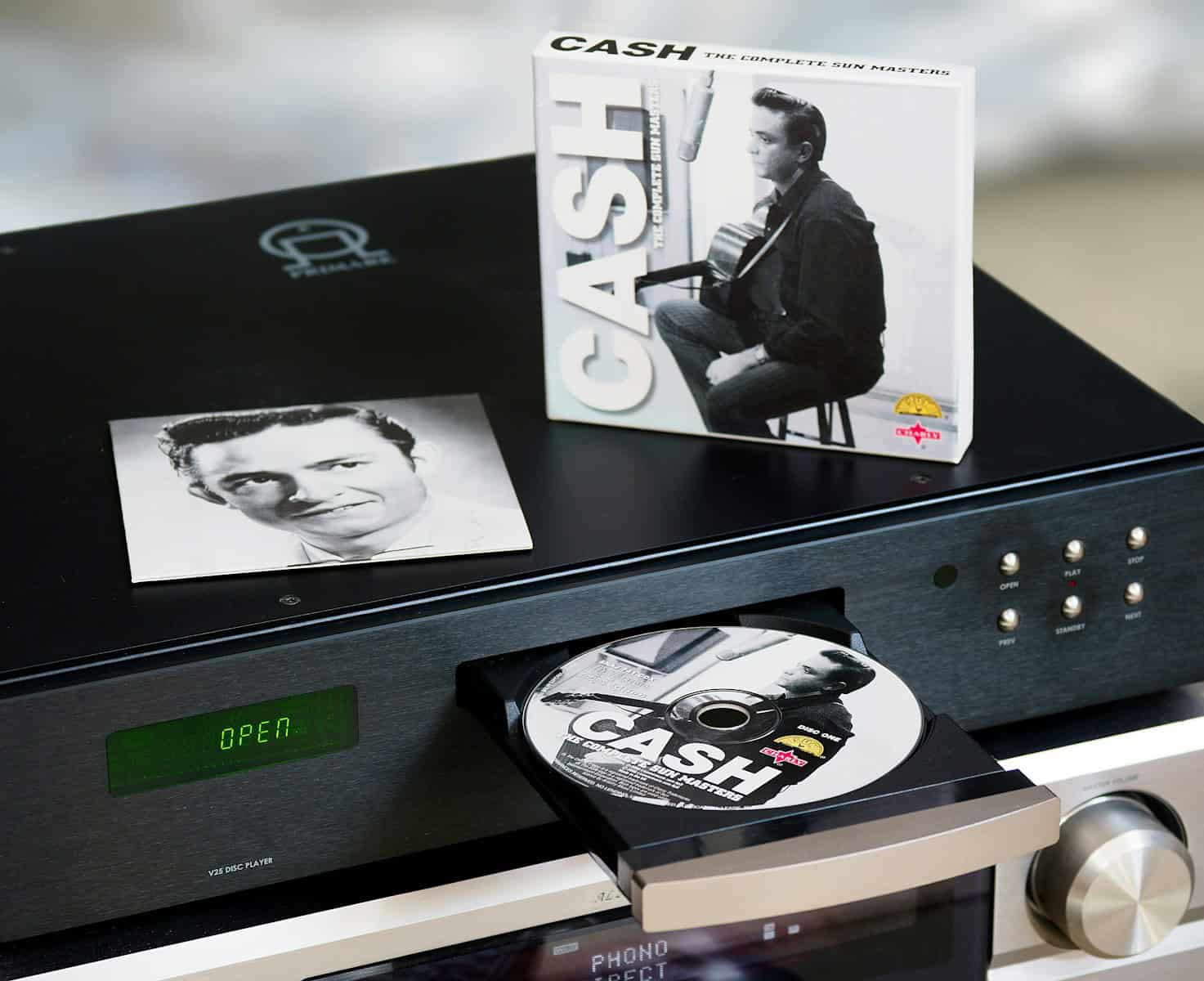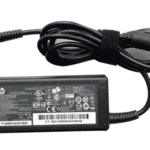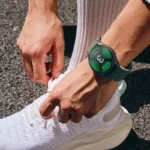DVD players can break down for many reasons. Sometimes the disc tray won’t open or close. Other times, the player won’t read discs at all. With basic tools and the right guidance, you can fix many common DVD player problems yourself instead of buying a new one.
Dust on the laser lens is a frequent issue that prevents DVDs from playing. A simple cleaning with a soft cloth or cotton swab can often solve this problem. Other easy fixes include replacing worn-out rubber belts that control the disc tray or checking power supply components when your device won’t turn on.
Before attempting repairs, always unplug your DVD player to avoid electric shock. Many repair guides and videos are available online to help you troubleshoot specific issues with your model. Some problems might require opening the case, but many fixes are straightforward enough for beginners.
Diagnose & Fix Common DVD Player Problems
DVD players, though increasingly replaced by streaming and Blu-ray devices, remain popular for physical media collections. Like any electronic device, they can fail or malfunction over time. This guide walks you through diagnosing and repairing the most common DVD player issues—saving you money and keeping your media accessible.
Tools & Materials You’ll Need
Before diving into the repair, gather these tools:
- Phillips-head screwdriver
- Cotton swabs and rubbing alcohol
- Compressed air can
- Multimeter
- Tweezers
- Replacement parts (gears, belts, laser assembly – optional depending on issue)
- Safety gloves (optional but recommended)
Safety First
- Unplug the DVD player before opening the case.
- Ground yourself to prevent static damage to internal parts.
- Do not attempt repairs if the device emits smoke, smells burnt, or has liquid damage—consult a professional.
Step 1: Identify the Problem
Match the symptom to the issue:
| Symptom | Likely Cause |
|---|---|
| Disc won’t spin | Faulty spindle motor or worn belt |
| Drawer won’t open or close | Jammed gear or broken tray motor |
| No power | Blown fuse, bad power supply |
| Skipping/freezing playback | Dirty or failing laser lens |
| “No Disc” error | Laser can’t read disc or dirty lens |
| Distorted audio/video | Faulty connections, dirty disc, bad DAC |
| Remote not working | Dead batteries or faulty IR sensor |
Step 2: Clean the DVD Player
Clean the Exterior and Vents
- Wipe down with a microfiber cloth.
- Use compressed air to blow out dust from vents.
Clean the Laser Lens
A dirty lens is the most common cause of playback issues.
- Open the DVD player casing (typically 4–6 screws).
- Locate the laser lens—it’s a small glass “eye” in the disc tray assembly.
- Dampen a cotton swab with isopropyl alcohol.
- Gently clean the lens with the damp side, then dry with the clean side.
Avoid excessive pressure or soaking the lens.
Step 3: Repair Common Mechanical Issues
DVD Tray Won’t Open or Close
Check for:
- Broken or dislodged gears
- Worn rubber belts
- Jammed discs inside the tray
Fixes:
- Manually eject the tray using the small pinhole (insert a paperclip).
- Replace worn belts—these can often be sourced from electronics supply stores.
- Realign gears using tweezers and rotate the mechanism gently to test.
Disc Not Spinning
Check the spindle motor:
- Manually place a disc and observe if it spins when the tray is closed.
- If not, inspect the motor for corrosion or breakage.
Fixes:
- Replace the spindle motor (requires soldering).
- Lubricate any stiff moving parts with a light electronics-safe lubricant.
Step 4: Electrical & Power Issues
DVD Player Won’t Power On
- Check the wall outlet and power cable.
- Open the case and inspect the power supply board.
- Look for:
- Bulging capacitors
- Burnt smell or black marks
- Blown fuse (test with a multimeter)
Fixes:
- Replace the fuse with one of the same type and rating.
- If capacitors are bulging, you can desolder and replace them.
- In worst cases, replace the entire power supply board.
Step 5: Playback & Disc Reading Issues
“No Disc” or Playback Skipping
After cleaning the lens:
- Try multiple discs—ensure the issue isn’t with the disc itself.
- Observe the laser: on power-up, you should see faint movement or glow.
- Check ribbon cables for looseness or damage.
Fixes:
- Reconnect or replace the ribbon cable.
- Replace the laser lens assembly (requires soldering, matching the model number).
- Align the laser track gears if it’s stuck or skipping.
Step 6: Audio & Video Distortion
Causes:
- Loose or oxidized A/V or HDMI connections
- Dirty or scratched disc
- Faulty DAC (digital-to-analog converter) inside the player
Fixes:
- Re-seat all cables or try new ones.
- Test output on a different TV.
- If audio distortion persists only with certain formats, your player’s internal decoder may be failing—this would require board-level repairs or replacement.
Step 7: Remote Control Doesn’t Work
Troubleshoot:
- Replace the batteries.
- Use a phone camera to check if the IR sensor blinks when you press buttons.
- Try resetting the player by unplugging it for 10 minutes.
Fixes:
- Clean the IR receiver on the front of the DVD player.
- Replace the remote or use a universal one if the internal IR board is damaged.
When to Replace Instead of Repair
Sometimes, replacement is more practical than repair:
| Problem | Consider Replacement If… |
|---|---|
| Laser Assembly Fails | Replacement parts cost more than $30-$40 |
| Power Supply is Fried | New DVD players are cheaper than the board replacement |
| No HDMI Output or Upscaling Issues | You want modern compatibility for newer TVs |
| Repeated Mechanical Failures | Gears/motors keep jamming even after repair |
Bonus Tips
- Firmware updates: Some newer players support firmware updates via USB. Check the manufacturer’s site.
- Keep the player level: Uneven surfaces can cause disc imbalance and skipping.
- Use DVD lens cleaner discs: Good for regular maintenance, not deep cleaning.
Conclusion
DVD players are surprisingly fixable if you know what to look for. From cleaning the lens to replacing a tray belt or fuse, many common issues can be resolved at home with basic tools and patience. Always match parts by model and proceed carefully when handling internal electronics. If your player is still not working after trying these fixes, it may be time to invest in a new device—many Blu-ray players today support DVDs and streaming apps for under $100.
Key Takeaways
- Most common DVD player problems can be fixed at home with basic tools and proper guidance.
- Regular maintenance like lens cleaning can prevent many DVD player issues before they start.
- Always disconnect the power before opening any electronic device for safety reasons.
DVD Player Repair Essentials
DVD players can often be fixed at home with the right knowledge and tools. Most problems stem from a few common areas like the laser lens, power supply, or mechanical parts.
Common Issues and Symptoms
DVD players typically show several warning signs before failing completely. A common problem is when the player won’t read discs. This usually happens because of a dirty or misaligned laser lens. Discs that skip, freeze, or show pixelated images point to lens problems too.
Tray issues are also frequent. If your tray won’t open or close smoothly, the belt might be worn out or slipped off its track. Some players make grinding noises when the disc spins, suggesting motor problems.
Power issues show up as no power, intermittent shutdown, or the player turning off during use. These often stem from failing capacitors in the power supply board. NTSC format problems might appear as color issues or screen flickering on older players connected to modern TVs.
Tools and Safety Precautions
Repairing DVD players requires basic tools and careful attention to safety. You’ll need:
- Small Phillips and flathead screwdrivers
- Cotton swabs and isopropyl alcohol (90%+)
- Compressed air can
- Multimeter for testing voltages
- Anti-static wrist strap
Safety first! Always unplug the DVD player before opening it. Capacitors in the power supply can hold charge even when unplugged, so wait 30 minutes after unplugging before touching internal components.
Wear the anti-static wrist strap to prevent damage to sensitive components. Work in a well-lit, clean area with enough space to organize small parts. Keep track of screws by placing them in labeled containers or taping them to paper with notes about their location.
Diagnosis: Step-by-Step Process
Start by checking the simplest solutions first. Clean the laser lens using a cotton swab with isopropyl alcohol, moving gently from center to edge. Never touch the lens with your fingers.
If cleaning doesn’t work, check these areas in order:
- Power supply: Look for bulging capacitors on the circuit board
- Mechanical issues: Inspect belts for wear and proper tension
- Laser assembly: Check for proper movement and alignment
- Sensors: Ensure all sensors are clean and connected
Use the multimeter to test voltage at key points in the power supply. Most DVD players use similar voltage ranges for their components. Service options include replacing the laser assembly ($15-30) or the entire power board ($20-40).
For tray problems, lubricating the rails with a tiny amount of silicone grease often works wonders. If a sensor is failing, they can sometimes be cleaned rather than replaced, saving significant repair costs.
Component Repairs and Solutions
When your DVD player stops working correctly, it’s often due to problems with specific components. Most issues fall into three main categories that you can troubleshoot and potentially fix yourself with basic tools.
Disc Not Reading
When your DVD player won’t read discs, the problem usually involves the laser lens or disc recognition system. First, try cleaning the laser lens with a soft, lint-free cloth or a DVD lens cleaner disc. Dust and fingerprints on the lens are common culprits.
If cleaning doesn’t help, check if the laser assembly moves smoothly. The laser might be stuck or misaligned. Gently push it with a cotton swab to test movement. Sometimes the laser power needs adjustment, but this requires opening the player and using specific equipment.
For severe cases where the player makes grinding noises or can’t grip the disc, the problem might be with the disc clamping mechanism. Check for:
- Loose screws in the disc tray
- Damaged clamp that holds the disc in place
- Worn-out gripping pads
Some older players may need firmware updates to read newer disc formats. Check the manufacturer’s website for available updates.
Eject Button Malfunctions
Eject button problems often stem from mechanical issues rather than electronic failures. When the eject button stops working, first check if the power supply is functioning properly. A weak power supply can prevent the tray mechanism from receiving enough power.
The most common mechanical issues include:
- Broken plastic parts in the eject mechanism
- Loose connections between the button and the internal switch
- Debris blocking the tray movement
To fix these problems, you’ll need to open the DVD player case. Carefully disconnect the power and use a screwdriver to remove the cover. Look for broken plastic pieces, loose gears, or disconnected wires around the eject mechanism.
Try manually rotating the gear that moves the tray to see if it’s stuck. Apply a small amount of lubricant to the sliding rails if they appear dry. If the button itself feels stuck, clean around it with compressed air.
Spindle Motor Troubleshooting
The spindle motor rotates the DVD and is crucial for proper playback. When this motor fails, discs won’t spin or will spin at incorrect speeds, causing freezing or skipping during playback.
Common spindle motor problems include:
- Worn-out bearings causing grinding noises
- Electrical failures preventing rotation
- Speed control issues causing playback problems
To diagnose spindle motor issues, listen for unusual noises when a disc is inserted. Grinding or clicking sounds often indicate mechanical failure. If the disc spins but at irregular speeds, the problem may be with the motor control circuitry.
For simple fixes, try cleaning the motor shaft and applying a tiny drop of light machine oil to the bearings. If the motor doesn’t spin at all, check the voltage reaching it using a multimeter. Low voltage readings suggest a power supply problem rather than a motor failure.
Replacing the spindle motor is often more cost-effective than buying a new player for high-end models. Motors are available from electronics supply stores or from parts harvested from identical broken players.
Frequently Asked Questions
DVD players can develop various problems over time. These common issues often have simple solutions that don’t require professional repair.
How can I troubleshoot a problem with my DVD player if it won’t read discs?
If your DVD player won’t read discs, first check if the disc is clean and free of scratches. Dirty or damaged discs are a common cause of reading errors.
Try cleaning the DVD player’s laser lens with a lens cleaning disc. These special discs have small brushes that remove dust from the lens.
Sometimes the problem is with the disc format. Make sure your DVD player supports the type of disc you’re using (DVD-R, DVD+R, etc.).
What are some common issues with DVD players and how can they be resolved?
Disc tray problems are common in DVD players. If the tray won’t open, check if the child lock feature is enabled and disable it.
If the DVD player shows no power, check the power cord connections. Try a different outlet to rule out power supply issues.
Poor picture quality often results from loose cable connections. Ensure all cables are firmly connected to both the DVD player and TV.
What is involved in the process of repairing a DVD player at home?
Basic DVD player repairs can be done at home with common tools. Always unplug the device before attempting any repairs.
Cleaning is the first step in many repairs. Use compressed air to remove dust from the interior components without touching them.
For more complex issues like laser replacement, you’ll need specific tools like a soldering iron and the correct replacement parts.
Is it feasible to repair Sony, Panasonic, or Samsung DVD players, and how would one go about it?
Brand-name DVD players like Sony or Samsung can often be repaired at home. Each brand has similar basic components despite different designs.
For Sony players, disc reading problems typically involve cleaning the lens or adjusting the laser power through the service menu.
Panasonic and Samsung DVD repairs may require model-specific parts. Check online marketplaces or contact the manufacturer for genuine replacement components.
Are there any reliable guides available for downloading that assist with DVD player repairs?
Many manufacturers offer service manuals on their websites. These provide detailed troubleshooting steps and repair instructions.
Online forums dedicated to electronics repair have user-created guides for specific DVD player models. These often include helpful photos.
YouTube offers visual tutorials for common DVD player repairs. Search for your specific model number to find the most relevant videos.
When is it more sensible to replace a DVD player rather than attempt a repair?
When repair costs exceed half the price of a new player, replacement is usually more economical. New basic DVD players are quite affordable in 2025.
Multiple component failures often indicate the end of a DVD player’s useful life. This is especially true for players older than 7-10 years.
If replacement parts are discontinued or hard to find, replacing the unit is typically the better option. This is common with older models.







